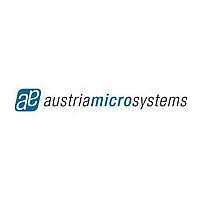AS5130-ASSU austriamicrosystems, AS5130-ASSU Datasheet - Page 20

AS5130-ASSU
Manufacturer Part Number
AS5130-ASSU
Description
IC ENCODER ROTARY 8-BIT 16-SSOP
Manufacturer
austriamicrosystems
Type
Linear, Rotary Encoder - Programmabler
Datasheet
1.AS5130-ASST.pdf
(41 pages)
Specifications of AS5130-ASSU
Sensing Range
32mT ~ 75mT
Voltage - Supply
4.5 V ~ 5.5 V
Current - Supply
24mA
Output Type
Analog, Ratiometric
Features
Programmable
Operating Temperature
-40°C ~ 125°C
Package / Case
16-SSOP
Lead Free Status / RoHS Status
Lead free / RoHS Compliant
Current - Output (max)
-
AS5130
Data Sheet - D e t a i l e d D e s c r i p t i o n
The best performance of the AS5130 will be achieved when operating within the AGC range. It will still be operational outside the AGC range, but
with reduced performance especially with a weak magnetic field due to increased noise.
Factors Influencing the AGC Value.
OTP Sensitivity Adjustment.
at normal operating temperature should be in the middle between minimum and maximum, hence it should be around 32 (20H). To facilitate the
“vertical centering” of the magnet+IC assembly, the sensitivity of the AS5130 can be adjusted in the OTP register in 8 steps
OTP sensitivity setting corresponds to the customer register setting gain <2:0>.
7.6 “Pushbutton” Feature
Using the magnetic field strength software and hardware indicators described above, the AS5130 provides a useful method of detecting both
rotation and vertical distance simultaneously. This is especially useful in applications implementing a rotate-and-push type of human interface
(e.g. in panel knobs and switches).
The CAO output is low, when the magnetic field is below the low limit (weak or no magnet) and high when the magnetic field is above the low limit
(in-range or strong magnet).
A finer detection of a vertical distance change, for example when only short vertical strokes are made by the pushbutton, is achieved by
memorizing the AGC value in normal operation and triggering on a change from that nominal the AGC value to detect a vertical movement.
Figure 15. Magnetic Field Strength Indicator
www.austriamicrosystems.com/AS5130
The initial strength of the magnet. Aging magnets may show a reducing magnetic field over time which results in an increase of the AGC
value. The effect of this phenomenon is relatively small and can easily be compensated by the AGC.
The vertical distance of the magnet. Depending on the mechanical setup and assembly tolerances, there will always be some variation of
the vertical distance between magnet and IC over the lifetime of the application using the AS5130. Again, vertical distance variations can be
compensated by the AGC.
The temperature and material of the magnet. The recommended magnet for the AS5130 is a diametrically magnetized 6mm diameter
magnet. Other magnets may also be used as long as they can maintain to operate the AS5130 within the AGC range. Every magnet has a
temperature dependence of the magnetic field strength. The temperature coefficient of a magnet depends on the used material. At elevated
temperatures, the magnetic field strength of a magnet is reduced, resulting in an increase of the AGC value. At low temperatures, the mag-
netic field strength is increased, resulting in a decrease of the AGC value. The variation of magnetic field strength over temperature is auto-
matically compensated by the AGC.
To obtain best performance and tolerance against temperature or vertical distance fluctuations, the AGC value
V
+5V
DD
V
SS
In practical use, the AGC value will depend on several factors:
V
V
SS
DD
Output
Output
I/O
LED1
Revision 1.11
1k
CAO
CS
DCLK
DIO
C1
V
AS5130
DD
AS5130
V
SS
100n
(see Table
10). The
20 - 41












